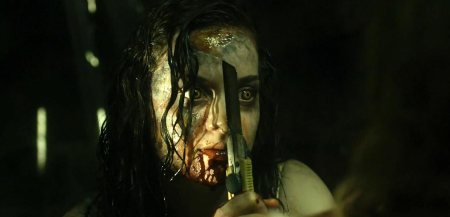![Fairhaven6[1].r](https://robsmovievault.files.wordpress.com/2013/04/fairhaven61-r.jpg?w=450&h=200) Fairhaven’s a beautiful town, especially in winter. That much we learn from Fairhaven, though not much else. The movie tracks the vague disappointments of three friends who grew up together in southcoastal Massachusetts. Jon (Tom O’Brien) works on a fishing boat but wants to be a writer. Sam (Rich Sommer) sells real estate and is having a hard time getting back in the romance game after his divorce. Dave (Chris Messina), the one who left town, is back home for his father’s funeral. Dave is the kind of scabrously honest guy built to kick out the underpinnings of complacency in his buddies. We watch as the guys, in pairs or in trio, wander around trying to distract themselves with women who never get to say much. That’s essentially the movie.
Fairhaven’s a beautiful town, especially in winter. That much we learn from Fairhaven, though not much else. The movie tracks the vague disappointments of three friends who grew up together in southcoastal Massachusetts. Jon (Tom O’Brien) works on a fishing boat but wants to be a writer. Sam (Rich Sommer) sells real estate and is having a hard time getting back in the romance game after his divorce. Dave (Chris Messina), the one who left town, is back home for his father’s funeral. Dave is the kind of scabrously honest guy built to kick out the underpinnings of complacency in his buddies. We watch as the guys, in pairs or in trio, wander around trying to distract themselves with women who never get to say much. That’s essentially the movie.
Fairhaven is a wee, almost microscopic character study whose characters, and their issues, seem imported from similar movies. I kept reflecting on 1996’s Beautiful Girls, which had a larger cast, a more authentically New England flavor (though most of it was shot in Minnesota), and more vivid female characters. Fairhaven could’ve used a Rosie O’Donnell figure, loudly barging through the fog of white male weltschmerz. The movie feels intimate and therapy-bound yet aesthetically remote; whenever we’re looking at tasty footage of Fort Phoenix at dusk we can understand why cinematographer Peter Simonite broke out the wide canvas, but inside cramped houses with two people talking the wide frame almost mocks the unimportance of what’s going on, or not going on.
I usually give movies like this the benefit of the doubt up to a point, that point generally being the moment I feel I’ve apprehended everything the movie has to say, and it’s not fixing to do anything else but amplify or reiterate what it’s said. That moment came fairly early in Fairhaven, when Jon and Dave are at a strip club and Dave confesses an affair with Sam’s ex-wife Kate (Sarah Paulson). I grumbled to myself, “This scene had maybe six lines of relevant dialogue and could’ve been set anywhere, and they had to stage it in a strip club?” Not that I’m a prude, but in a movie so disinterested in what women have to say, it sort of matters. Anyway, the scene leads to a flat-out unbelievable bit in which a stripper takes Jon and Dave home for a coke-dusted threesome, which Jon skips out on because he has a girlfriend, though she’s been making earnest noises about open relationships, and somehow she doesn’t get mad when he drops in on her in the middle of the night and tells her where he’s been. She’s just a sounding board, like every other woman in town.
Fairhaven was directed by its star, Tom O’Brien, and written by him and his co-star Chris Messina, and it has that Good Will Hunting whiff about it — an actors’ script, written to its actors’ strengths to show off what they can do. The drama burns with such a low flame, though, that the most the talented stars can do is brood and pose and perform “act what isn’t said” exercises. The latter part makes Fairhaven obliquely interesting — we feel as though there are dozens of backstories to what we’re seeing. We don’t really get to know the guys, though. Each gets one or two traits. Jon is haunted by superstar quarterback Tom Brady’s averral that he still feels unfulfilled, and this Peggy Lee-esque “is that all there is” lament runs through Jon’s character arc. Generally, in a film like this, Jon would be advised to get out of Fairhaven and go be a writer. But that advice is placed in the foul mouth of Dave, who only fled town because he slept with his buddy’s wife anyway. And the town is made to look so gorgeous and restful that it seems the movie doesn’t want to pull the trigger on Fairhaven as a go-nowhere burg.
Which it isn’t. I liked that Promised Land made a case for its rural setting, and I like the case visually made for the town here. But you’d never know from Fairhaven that the actual town has a rich literary pedigree — Mark Twain liked to hang around there, chumming it up with oilman and town benefactor Henry Huttleston Rogers. But what is Jon going to write about? What kinds of things will he write? A novel set in Fairhaven about three overgrown boys who can’t figure out underwritten women? They can’t figure out the women because there’s nothing in them to figure out, and nothing in the guys, either. Fairhaven is one of those self-consciously low-key indie films that come around every couple of years — the kind of drama that actively avoids Hollywood clichés (tearful confrontations and revelations) but has nothing to replace them with except indie-film clichés (off-the-cuff confrontations and revelations). There’s no passion, no spark. It’s an actor’s workshop with intermittent slide shows of Fairhaven, but Fairhaven bats its eyelashes becomingly, ready for its close-up.









